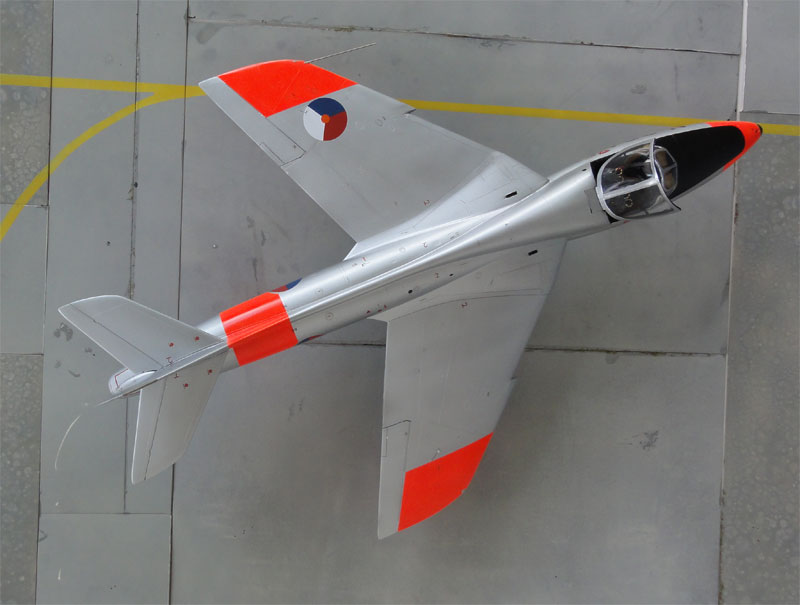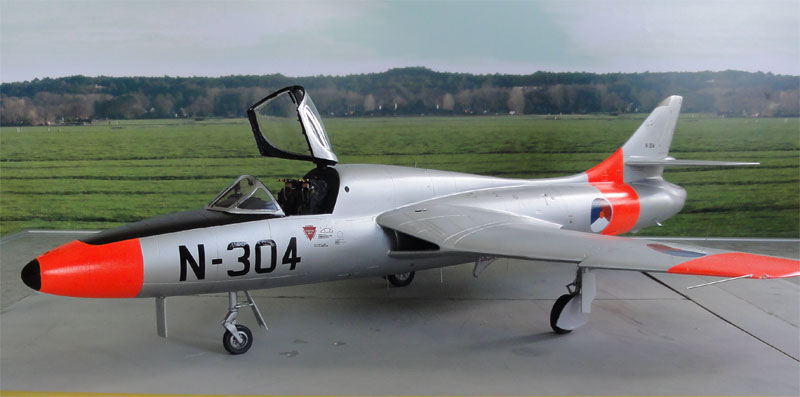[ Page 3 ]
1/32 scale Hunter T-7 FISHER conversion of Revell kit

kit review modelling report
For the high speed silver, XTRACOLOR X38 enamel was purchased. This is best airbrushed thinning the paint 50% paint + 25% thinner + 25% white spirit (wasbenzine in Dutch). This is the next colour to add after masking the dayglow areas.
The cockpit area was masked off.
Using the Steinbeck
airbrush, the overall silver result was nice. After 48 hours drying
time, the model got a couple of coats of Johnson
Kleer/Future again to get a nice glossy shine, ready to get the decals
applied.
.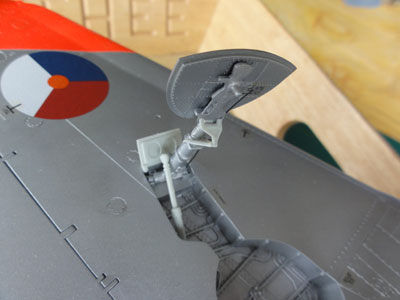 .
.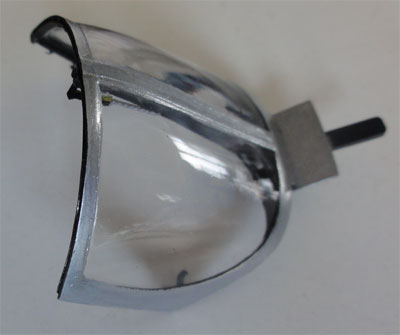 .
.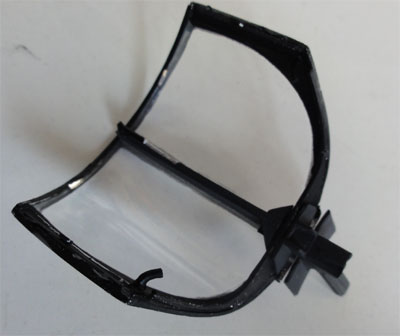
As the canopy was dipped in Johnson
Future/Kleer (to get a better gloss look), the canopy framing was hand
painted so not sprayed to avoid masking. I was afraid masking the clear
areas would damage the kleer/future coats.
Inside the canopy the etched metal parts like locking mechanism were added and two tiny rear view mirrors inside the frame. (the 3 FISHER mirrors are bit too large, so I made new ones)
The Dutch Hunter T-7 decals came from,
as noted on page 2, from Flevo
Decals. The decals are VERY THIN, so be very carefull when applying
them, they quickly tear off. Overall, the decals went on nicely.
![]()
Dutch T-7 serial/code N-304 Hunter
was picked to model, and this is one of the options on the decal sheet.
Some stencilling data was applied from the Revell sheet as well as some
tiny data details are seen on pictures. Noteworthy is the red panel marking
at the tailchute area. This was made from spare thin red decal. 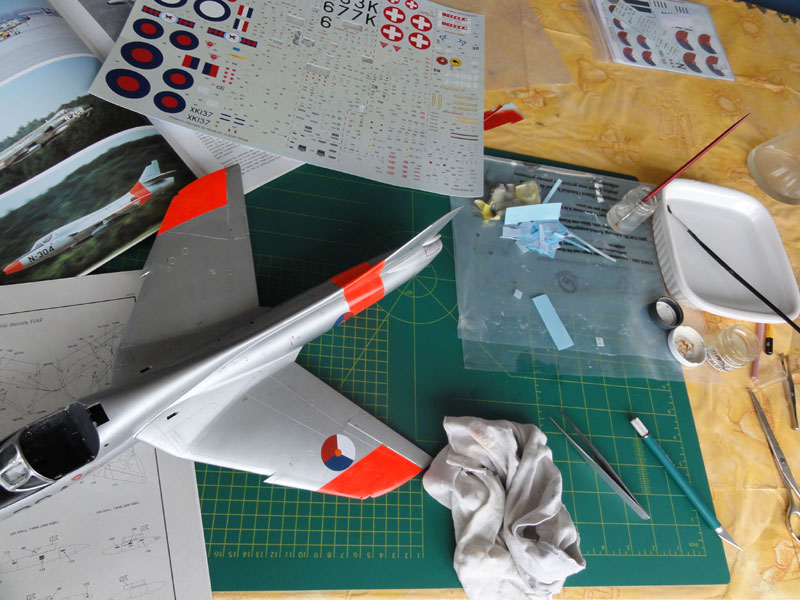
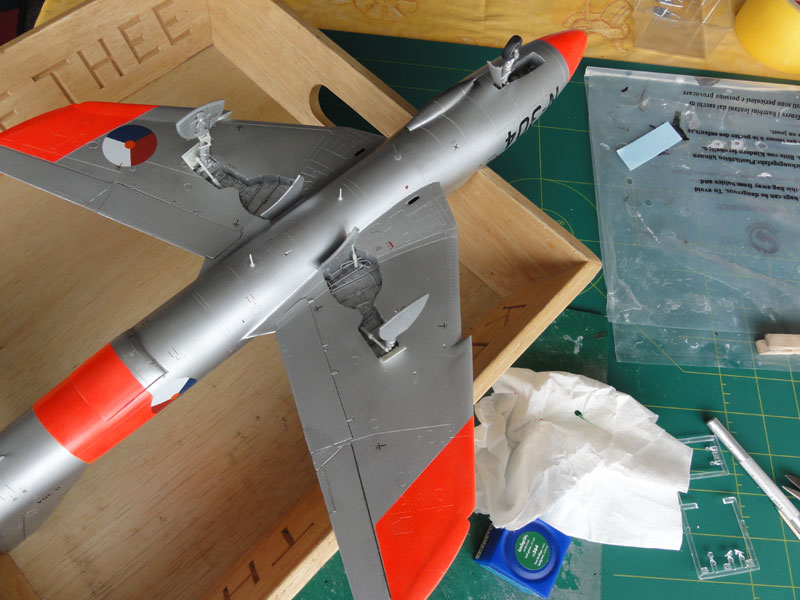
![]()
The model was now ready to be completed.
The next steps were done:
- the undercarriages and wheels were added, using the metal gear-legs from the FISHER conversion set; the nose wheel was set at an angle to add a bit different look to the model; the various rods and cylinders were added as per kit instructions. Some hydraulic pipes/lines were added made from thin metal wire.
- the various antennas on wings, below fuselage and to the T-7 spine were added, some from kit parts, others made from thin metal wire.
- the canopy inner areas were given the etched metal details as per FISHER instructions, like the small canopy hooks and locking edges. Inside the canopy also a retracting rod was added.
- the inboard flaps were set closed as usually seen on parked Hunters.
- the wingtip clear parts (as per kit) were filed a bit smaller to get a better fit.
- the wind screen wipers were added (as per FISHER instructions).
- the large pitot tube on the left wing was made from a metal needle
The overall finishing really makes the model standing out and worthwhile. The last step was a clean up and giving the overall model a final protecting coat of Johnson Kleer/Future gloss again.
This completes
the 1/32 T-7 Hunter trainer of the Dutch Air Force.
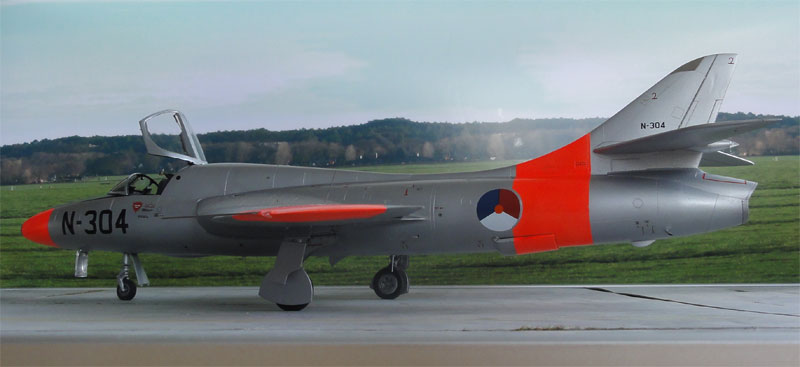
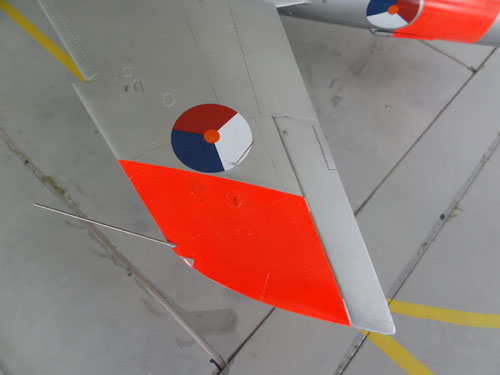
.wing tip antenna and pitot tube
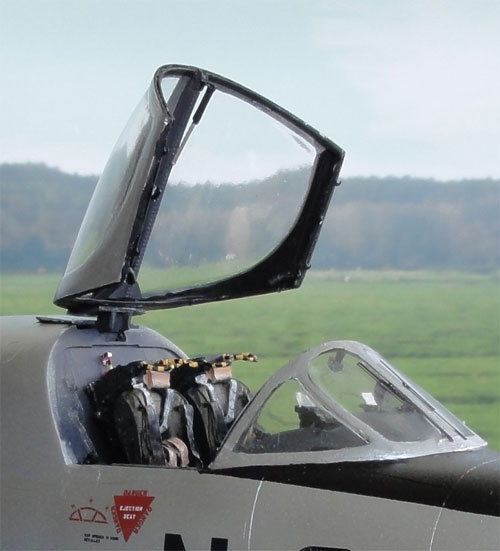
the canopy locking hooks can be seen
here as well
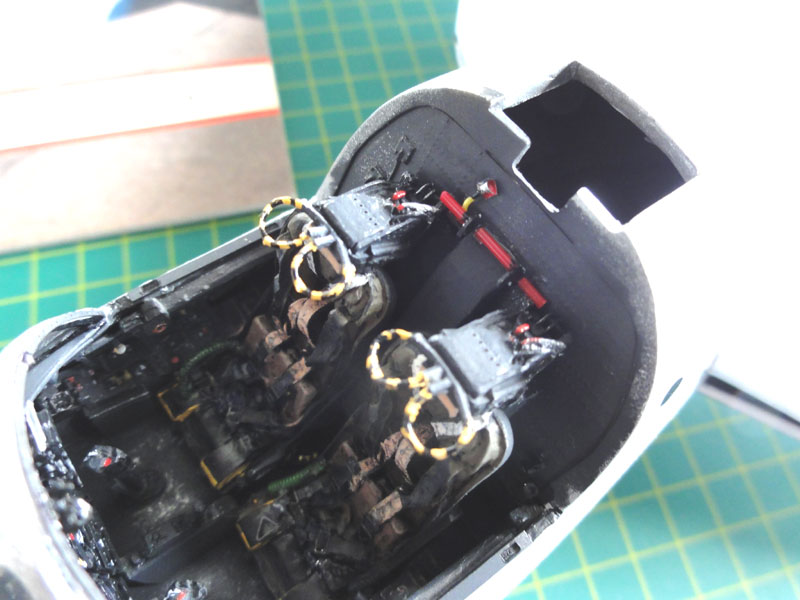
Some details of the cockpit. A magnetic
compass made from rod was added at the middle of the front windshield frame.
Also note training gun sights of the T-7.
(the big hole accommodates the loose canopy hinge)
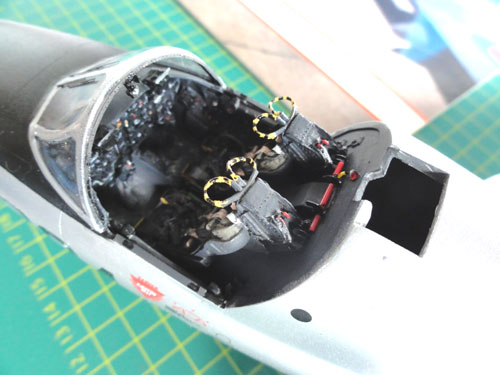
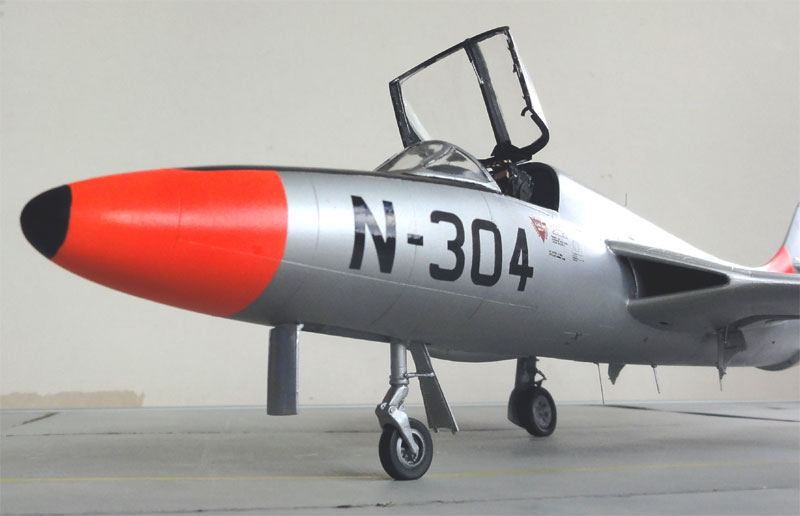
Note the fuselage belly antenna's
as well
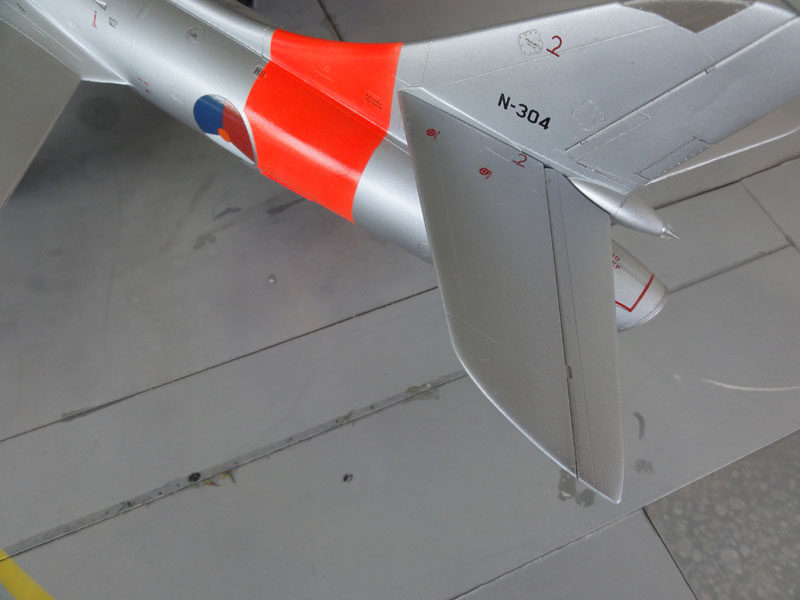
Note the metal edge around the rear
fuselage roundel. Noteworthy is also the red panel marking at the tailchute
area. This was made from spare thin red decal.
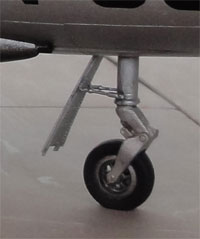 ..
..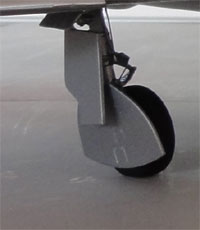 .
.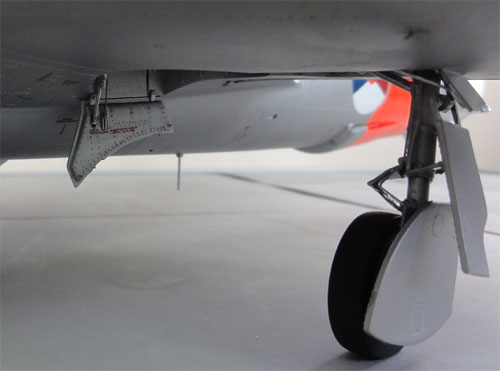
Landing gear with braking lines made
from thin metal wire
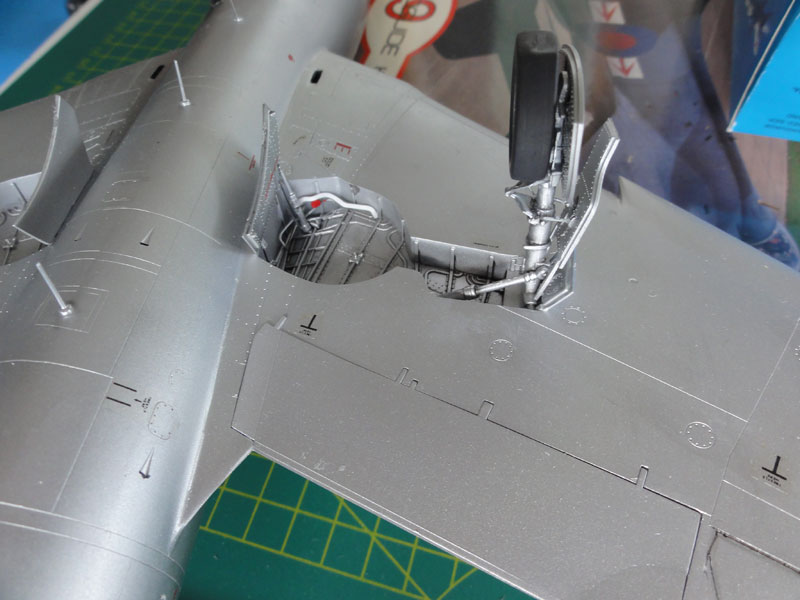
.
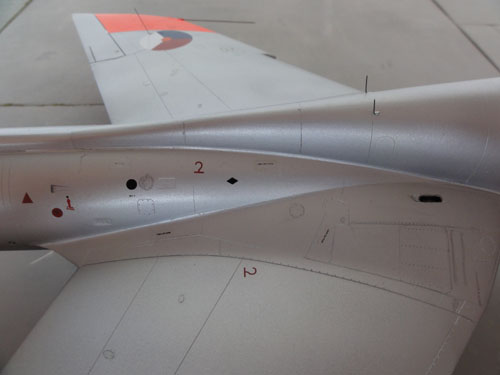
The T-7 upper area needs some modification
as compared to the Revell kit regarding grills, louvres
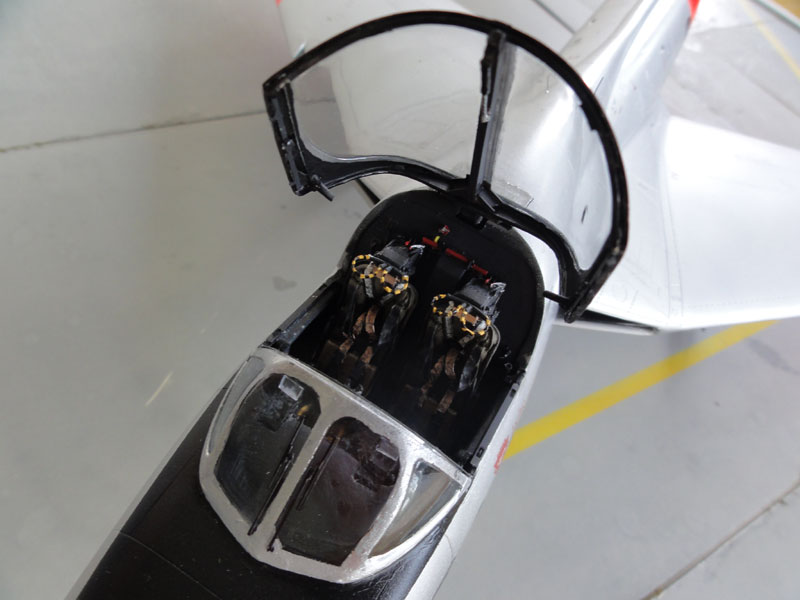
Note windscreen wipers (are in the
FISHER set, nice!). Inside the canopy also a retracting rod was added.
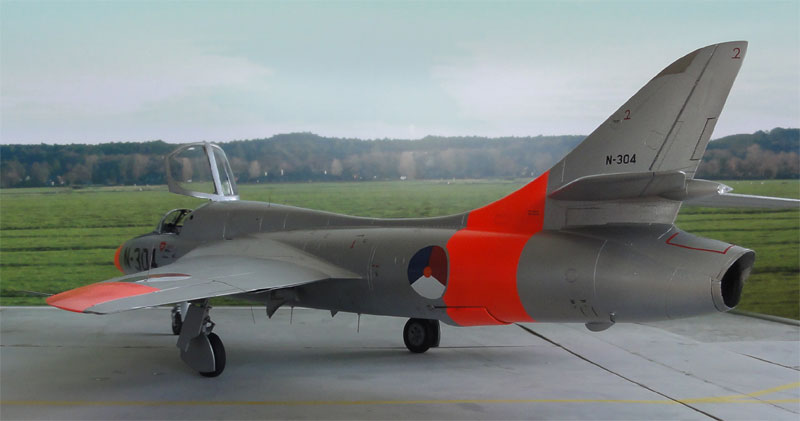
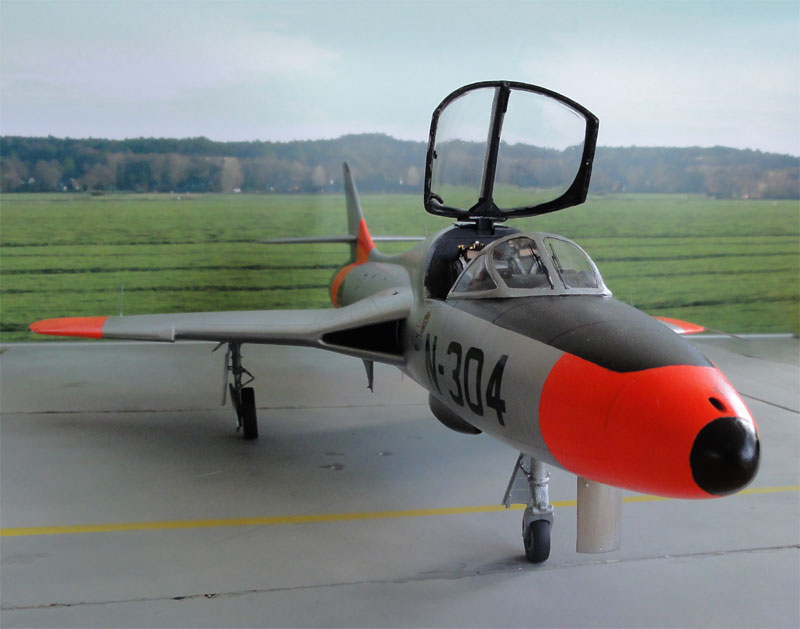

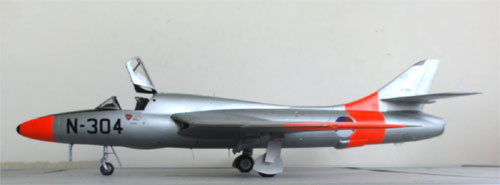 .
.
A nice addition
to my other 1/32 Hunters
in the collection.
Back to Hunter 1/32 main page
Back to 1/32 Models.......

(c) Copyright Meindert "designer"/ All rights reserved. Your comments are welcomed by webmaster
Created this page
August 6, 2010
